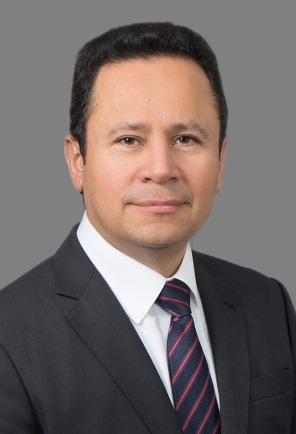So You Think You Have an Overall Foreign Loss?
Many taxpayers have found themselves saddled with the inability to claim foreign tax credits. In large part, taxpayers who have an overall foreign loss (OFL) are subject to double taxation on any foreign earnings that become subject to U.S. taxation. Not only do lower tax rates abroad encourage foreign investment, but the inability to achieve relief under the U.S. foreign tax credit regime makes it prohibitively expensive for companies to repatriate such earnings. This double-taxation quagmire was the primary driver for the U.S. government’s enactment of Section 965 of the Internal Revenue Code, which temporarily gave companies a pass on the foreign tax credit issue and allowed them to pay a nominal amount of U.S. tax on repatriated earnings and forgo the related foreign tax credits. Prior to the new overall domestic loss rules, the situation was even worse, especially for a taxpayer whose profitability varied from year to year and within separate entities in its global organization.
We have found that many companies who believe they have an OFL may be interpreting the rules too strictly or simply overlooking the situations that reduce OFLs (yes, there are some). In many cases, taxpayers may simply have failed to quantify their OFL due to a lack of time and motivation (where the size and annual recurrence of the OFL effectively rendered any foreign tax planning moot).
What follows is a simplified illustration of a common overall foreign loss problem:
A U.S. taxpayer has a wholly owned foreign subsidiary in the U.K. In Year 1, the U.S. parent has U.S. source taxable profits of $100. The U.K. subsidiary earns $20 and does not repatriate any earnings, but its existence causes $8 of U.S. expenses to be allocated to foreign source income. There is no other foreign source income in the group. Technically, the $8 of foreign source “loss” (due to zero currently includible income and $8 of allocated expenses) offsets U.S. source income and thereby creates an overall foreign loss of $8. In a subsequent year, when the U.K. subsidiary declares a dividend of the $20, the $8 OFL will require the recharacterization of the foreign source income as U.S. source income (assuming 100 percent recapture). Essentially, the recharacterization will reduce foreign source income and will cause the 30 percent underlying U.K. tax rate to mimic a foreign tax rate of 50 percent ($6 in tax associated with $12 in foreign source income). Absent other low-taxed foreign source income, the U.K. taxes will not be fully creditable against U.S. tax. The result is that the $120 of global profits will bear an effective tax rate of approximately 36.5 percent (in excess of both the U.S. and U.K. corporate tax rates).
Even worse was the situation prior to 2007, when a company with foreign source income and U.S. losses did not get equitable relief. In a year with foreign source income and domestic losses, the foreign source income was merely “lost.” In a subsequent year when there were domestic profits and foreign losses, the OFL rules would kick in. Thankfully, this situation has been remedied in most cases with the creation of overall domestic loss (ODL) provisions that almost mirror the OFL rules. Do be careful to note that the ODL rules are not exactly the same as the OFL rules (no election to recapture more than 50 percent, not available when a taxpayer deducts foreign taxes, etc.).
The Good News
In addition to accurately tracking the creation of an OFL, you should take care not to miss opportunities to reduce the OFL. First, remember to reduce the OFL (and recharacterize income) when you recognize gain on the sale of certain property. Generally, the recapture rules source gain realized on the sale of property in the same way that income produced by that property would have been sourced. Taxpayers frequently miss the sourcing of gains in the U.S. return (especially when they believe they have an insurmountable OFL). Not only does the sale of certain property at a gain generate foreign source income for a U.S. seller, but so does the sale of certain controlled foreign corporation stock, intangibles, and even the sale of “assets” pursuant to a Section 338(h)(10) election.
Finally, remember to allocate a share of the consolidated OFL account to any departing group members. The allocation is based on the ratio of foreign income producing assets that the departing member takes with it, using the same value (fair market or tax basis) that the group uses for interest expense apportionment. Taxpayers frequently miss the allocation and leave the OFL balance with the members that created it (this was the appropriate method under the old rules).
The Bad News
In addition to the reductions of an OFL, there are also increases that must be taken into account. Following on the heels of the “opportunity” in the last paragraph, don’t forget that acquired entities may bring to the consolidated group a share of their former group’s OFL. The OFL of an acquired group member must be added to the existing OFL of a consolidated group acquirer.
Even worse, there are recapture rules that override the non-recognition provisions of the Internal Revenue Code. That’s right — you may actually have to recapture some part of your OFL (and recognize taxable income) in an otherwise tax-free transaction. The recapture rules apply to certain property that would generate foreign source income and can include an interest in a U.S. partnership if it owns property used outside the U.S. Note that the required gain recognition (and re-sourcing) applies to each asset, so gains are not offset by losses prior to the OFL recapture rules. Check to make sure you don’t have foreign source gains buried in the mix.
Items to Watch for (Could Be Good or Bad)
In the current economic environment, many taxpayers have been confusing a net operating loss with a domestic loss. An OFL (or ODL) is not created until a loss of one character offsets income of another. When you have both domestic and foreign source losses, remember to retain the character in the carryforward of those losses (for alternative minimum tax, too). This can get tricky when tracking the utilization of net operating losses (and capital loss carryforwards).
Don’t forget that the income ultimately realized on a deferred intercompany transaction results in income that may be subject to the recapture provisions. For purposes of the OFL and ODL recapture rules, the gain is subject to recapture only when it is taken into account under the consolidated return regulations.
Alvarez & Marsal Taxand Says:
We have suggested before that taxpayers prepare for the potential impact of President Obama’s proposed changes to the U.S. taxation of international operations by addressing three areas (see The President Said What?? Obama Proposes Massive Changes to U.S. Taxation of International Operations). Our suggested “top” priority was to re-examine the allocation and apportionment of expenses. This goes hand in hand with quantifying your OFL and planning for the impact of deferral and/or repatriation in the future. The determination of the allocable and apportionable foreign source expenses is fundamental to the OFL.
After the allocation and apportionment of expenses, the detailed rules for recapture, offset and income sourcing required in Section 904 must be carefully followed on a year by year basis to determine the status of the taxpayer’s accounts.
Without an analysis of foreign source expenses and a proper scrub of the overall foreign loss, overall domestic loss, and separate limitation loss rules, time spent on the “top line” could be wasted effort if the net income is subjected to double taxation.
Disclaimer
As provided in Treasury Department Circular 230, this publication is not intended or written by Alvarez & Marsal Taxand, LLC, (or any Taxand member firm) to be used, and cannot be used, by a client or any other person or entity for the purpose of avoiding tax penalties that may be imposed on any taxpayer.
The information contained herein is of a general nature and based on authorities that are subject to change. Readers are reminded that they should not consider this publication to be a recommendation to undertake any tax position, nor consider the information contained herein to be complete. Before any item or treatment is reported or excluded from reporting on tax returns, financial statements or any other document, for any reason, readers should thoroughly evaluate their specific facts and circumstances, and obtain the advice and assistance of qualified tax advisors. The information reported in this publication may not continue to apply to a reader's situation as a result of changing laws and associated authoritative literature, and readers are reminded to consult with their tax or other professional advisors before determining if any information contained herein remains applicable to their facts and circumstances.
About Alvarez & Marsal Taxand
Alvarez & Marsal Taxand, an affiliate of Alvarez & Marsal (A&M), a leading global professional services firm, is an independent tax group made up of experienced tax professionals dedicated to providing customized tax advice to clients and investors across a broad range of industries. Its professionals extend A&M’s commitment to offering clients a choice in advisors who are free from audit-based conflicts of interest, and bring an unyielding commitment to delivering responsive client service. A&M Taxand has offices in major metropolitan markets throughout the U.S., and serves the U.K. from its base in London.
Alvarez & Marsal Taxand is a founding member of Taxand, the first global network of independent tax advisors that provides multinational companies with the premier alternative to Big Four audit firms. Formed in 2005 by a small group of highly respected tax firms, Taxand has grown to more than 2,000 tax professionals, including 300 international partners based in nearly 50 countries.
To learn more, visit www.alvarezandmarsal.com or www.taxand.com.






